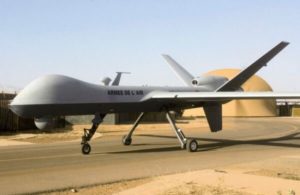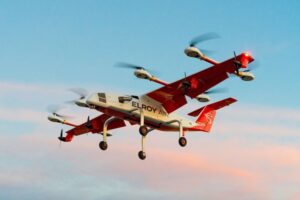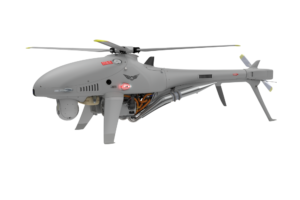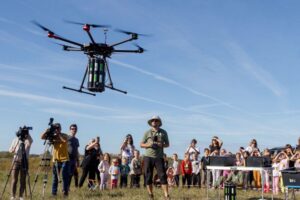The Senate overwhelmingly approved the FAA Reauthorization Act of 2024. Now, it’s in the House before it heads to the President’s desk to be signed into law. And though the act largely focuses on human-carrying aircraft, the act has a surprising amount to do with the drone industry.
This FAA Reauthorization Act of 2024 spells out how the government has authorized more than $105 billion for the Federal Aviation Administration to spend between fiscal years 2024 through 2028. The funding is set to cover everything from air safety improvements to customer service.
With that, lawmakers outline key provisions that the FAA must accomplish. Those things are generally tied to aviation safety, technology, air passenger rights and hiring aviation employees. For example, it emphasizes increased hiring and training of air traffic controllers. It also forces airlines to be more transparent and fair in giving passenger refunds.
And a somewhat large amount of the FAA Reauthorization Act of 2024’s bill text has to do with drones. In fact, the FAA Reauthorization Act of 2024 has 13 uses of the word ‘drone,’ and 52 uses of ‘UAS. ‘
Much of the text outlined by the bill further streamlines approvals of drone flights. At the moment, many types of drone flights require onerous waivers and applications — creating headaches for drone pilots. This act does much to cut down on that. For example, a provision will streamline approvals to allow for more drone operations for offshore oil and gas facilities in international waters. It makes it easier to accept drone delivery of essential medicines. And it directs the FAA to complete its Beyond the Visual Line of Site rule making, which will expand drone delivery and other drone operations throughout the U.S.
You can read the full text of the FAA Reauthorization Act of 2024 here. But of those dozens of mentions, here are some highlights that are of especial relevance to the drone world:
Highlights for drone pilots in the FAA Reauthorization Act of 2024: what it means for drone pilots
The legislation paves the way for the expansion of beyond visual line of sight (BVLOS) operations. Generally speaking, at the moment the government heavily restricts BVLOS flights, which is where a drone flies beyond the pilot’s direct line of sight.
Section 44811 actually requires that — within four months of the enactment of this act — the FAA issue a notice of proposed rulemaking that would establish a performance-based regulatory pathway for drones to operate BVLOS flights. Of course, that doesn’t mean we’ll have rules in four months. That just means the FAA has to say they’ll look into it within four months.
But still, that’ll be critical in establishing what exactly drone companies need to do to build drones that are BVLOS-flight legal. And with that, the FAA opens doors for wider commercial applications like drone deliveries and infrastructure inspections.
That could include an approval process for drone makers to receive a special airworthiness certificate demonstrating that their drone is safe to fly BVLOS. Some lawmakers say that implementation of such a standard approval process could help American drone makers have a leg up against the competition.
“Bipartisan legislation that would streamline the approval process for beyond visual line of sight drone flights and clears the way for drones to be used for commercial transport of goods across the country – making sure that the U.S. remains competitive globally in a growing industry increasingly dominated by competitors like China,” said U.S. Sen. John Thune (R-S.D.), a member of the Senate Committee on Commerce, Science, and Transportation.
That said, the timeframe isn’t that far away. The bill requires that the FAA publish a final rule within 16 months after publishing the proposed rule.
2. Continues the BEYOND program
The bill continues the BEYOND program for at least another five years. Launched in 2020, relies on private-industry testing and data to help better understand drones. With it, a handful of companies work closely with the FAA to operate under established rules enabling them to collect data around drone use.
The FAA then uses that data to develop standards and inform policies around safe deployment and operation of drones.
3. Puts more money toward drones for infrastructure inspections
It’s no secret that infrastructure inspections make for one of the best use cases of drones. Products like the Sony Airpeak S1 drone (and its increasingly inspection-oriented updates) have demonstrated how powerful drones are in mapping and inspections.
The FAA Reauthorization Act of 2024 reinforces that notion — and makes it so more government agency can use drones.
The bill requires the Secretary of Transportation to establish a drone infrastructure inspection grant program, which would provide grants to governmental entities that use drones to support more efficient inspection, operation, construction, maintenance, and repair of critical infrastructure.
The money is a good example of how drones can improve worker safety — and it would pour more money into the drone industry as governments would be able to use grant funds to buy or lease drones, or pay for other drone companies to contract those services.
It’s a lot of money at that, with $12 million allocated every fiscal year for the next four years.
Related read: The best drone mapping classes to level up your skills (and make more money in your drone business)
4. Puts more money toward drone education
It looks like the government wants its top pilots’ knowledge of drones to go beyond simply passing the Part 107 test or passing the TRUST.
This bill requires the Secretary of Transportation to create a drone education and training grant program. Educational institutions of higher education (aka most colleges) would be able to apply for a portion of the $5 million allocated every year for the next four fiscal years.
That could give more opportunities to programs like the University of Missouri’s drone training program (which I participated in 2013). Ironically, the FAA shut that program down in 2013 — but it’s back.
And that’s not all in the way of drone education. The act also requires that the government “initiate a study of the effectiveness of” drone collegegiate training initiatives.
5. Creates yet another committee
If you get jazzed by the idea of yet another committee, well, cue the music. The bill requires that the FAA establish an Unmanned and Autonomous Flight Advisory Committee.
The FAA loves its committees. There was the Advanced Aviation Advisory Committee (AAAC), which provides advice on all things autonomously flying. There was the Drone Advisory Committee (known as DAC), which honed in on just drones. There’s one all about females in flight, by way of the FAA Women in Aviation Advisory Board. The list goes on — and with this new requirement, it’ll grow.
Under the requirements of the bill, the newly-established Unmanned and Autonomous Flight Advisory Committee would advise the FAA Administrator on drone-related policy and technical-level issues on a number of topics, including:
- Safe integration of drones into the national airspace system
- Certification and operational standards around drones
- Operational procedures in controlled and uncontrolled airspace
- Communication protocols
- Drone use cases and their benefits
- Risk assessment and mitigation strategies
- Drone training, education and development programs
- Drone infrastructure
That’s a wide span of topics, and it’s seeking a wide span of participants. The committee would include not more than 12 members. But, the bill requires that the committee include at least one representative from areas including commercial drone operators, drone manufacturers, counterdrone manufacturers, drone service suppliers, drone test ranges, drone network providers, community advocates, certified labor organizations and academia. That effectively means just 1-2 spots for someone from each group.
What’s next for drones in light of the FAA Reauthorization Act of 2024?
The last, similar bill was the FAA Reauthorization Act of 2018. President Donald J. Trump signed that bill into law on October 5, 2018.
In general, drone industry leaders like what the the FAA Reauthorization Act of 2024 offers.
“This legislation will support U.S. global leadership and competitiveness in advanced aviation and autonomy, which will bolster domestic investment, workforce development, and fair competition in the global marketplace,” said Michael Robbins, Chief Advocacy Officer at the Association for Uncrewed Vehicle Systems International (AUVSI). “It provides a meaningful step forward in safely integrating drones operating BVLOS and AAM aircraft into the airspace.”
Industry leaders have pointed to the stability and continuity that the bill affords.
“This legislation includes provisions that will encourage a regulatory landscape that further unlocks the safety, security, equity, sustainability, and economic benefits of using drones for many commercial and public safety use cases,” wrote Commercial Drone Alliance Executive Director Lisa Ellman in a public letter.
Criticism against the FAA Reauthorization Act of 2024
Yet not everyone in the drone industry is head over heals. Some in the counterdrone industry have expressed less enthusiasm — largely around the fact that they’ve felt ignored.
“We are disappointed that Congress failed to include new and enhanced counter-drone authorities for law enforcement and critical infrastructure in the final FAA Reauthorization,” said Dedrone CEO Aaditya Devarakonda in a prepared statement.
Dedrone is best known for its airspace security software that detects drones flying. It’s primarily used in places that don’t want rogue drones in their airspace. That includes critical infrastructure, government facilities, and major events. In May 2024, taser-maker Axon announced it would acquire Dedrone for an undisclosed sum.
For what it’s worth, Dedrone has close government ties. It’s the first drone-related company to earn SAFETY Act status from the Department of Homeland Security. And, it’s working with the FAA on a test project across a few U.S. airports to research airport counterdrone operations.
““Every day, Dedrone is on the frontlines with our public safety partners who are desperate to get the authorities and tools needed to protect our communities from the threats posed by malicious drones,” Devarakonda said, suggesting that the bill should require the FAA to do more to create those tools.
While specific regulations are still under development, the FAA Reauthorization Act of 2024 sets the stage for a future with safer and more integrated drone operations in the U.S. Drone pilots should stay tuned for future FAA pronouncements regarding Remote ID implementation, BVLOS authorization processes, and any potential changes in recreational drone regulations.
Did you find value in this article on the 5 highlights of the FAA Reauthorization Act of 2024 for drone pilots? I spend hours reading through legislation to help interpret it for my readers. Support my work by making a donation! Thank you!
Make a one-time donation
Your contribution is appreciated.
Donate
Make a monthly donation
Your contribution is appreciated.
Donate monthly
Make a yearly donation
Your contribution is appreciated.
Donate yearly
The post FAA Reauthorization Act of 2024: what it means for drone pilots appeared first on The Drone Girl.







